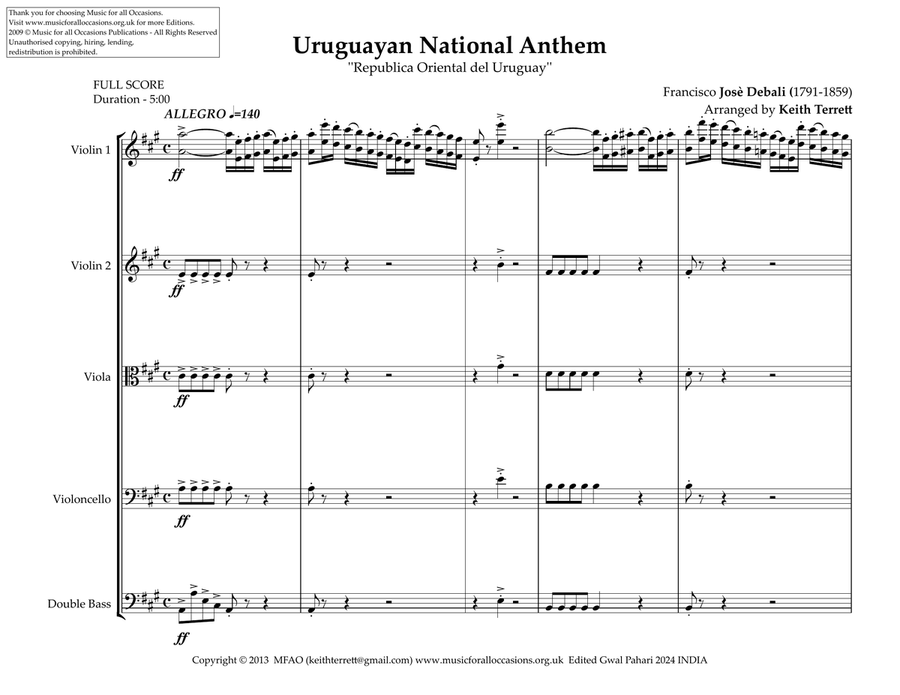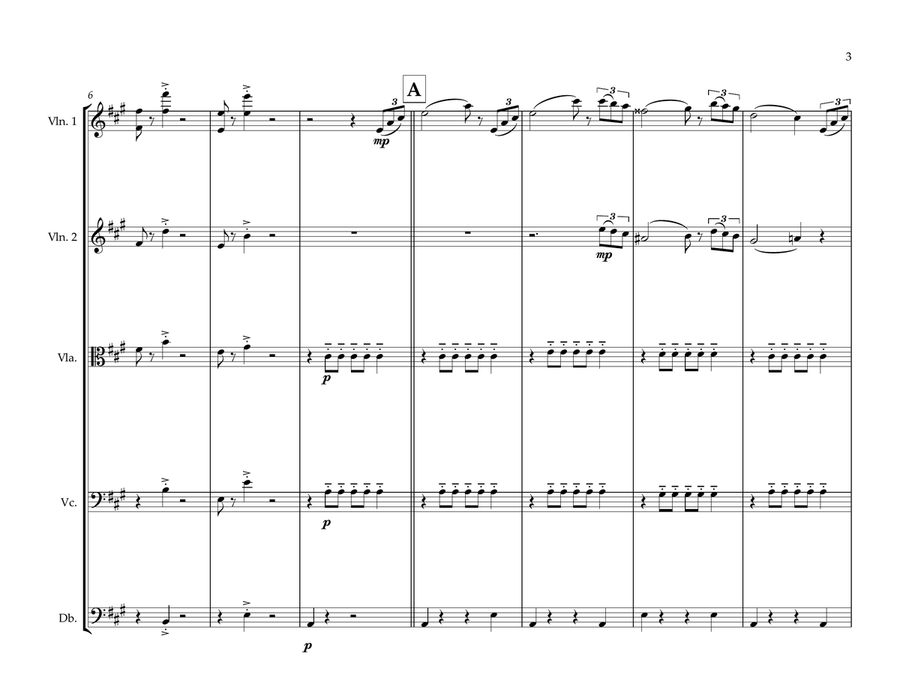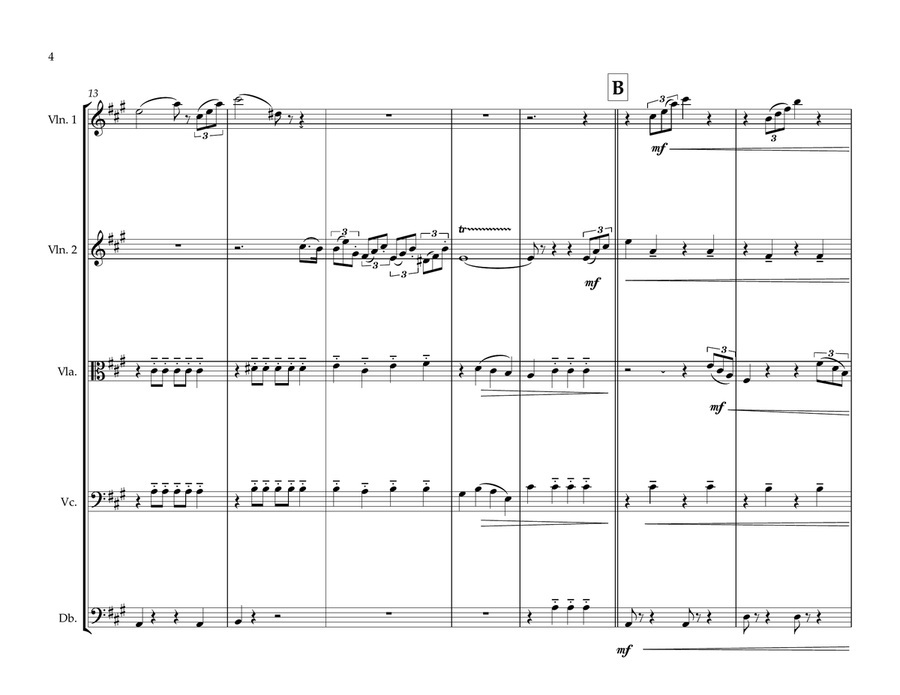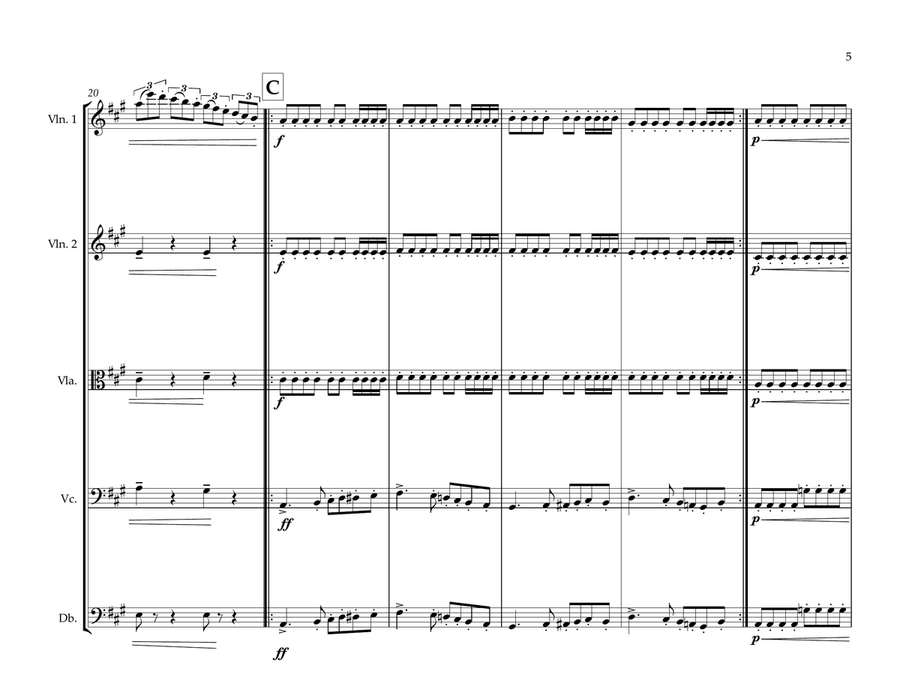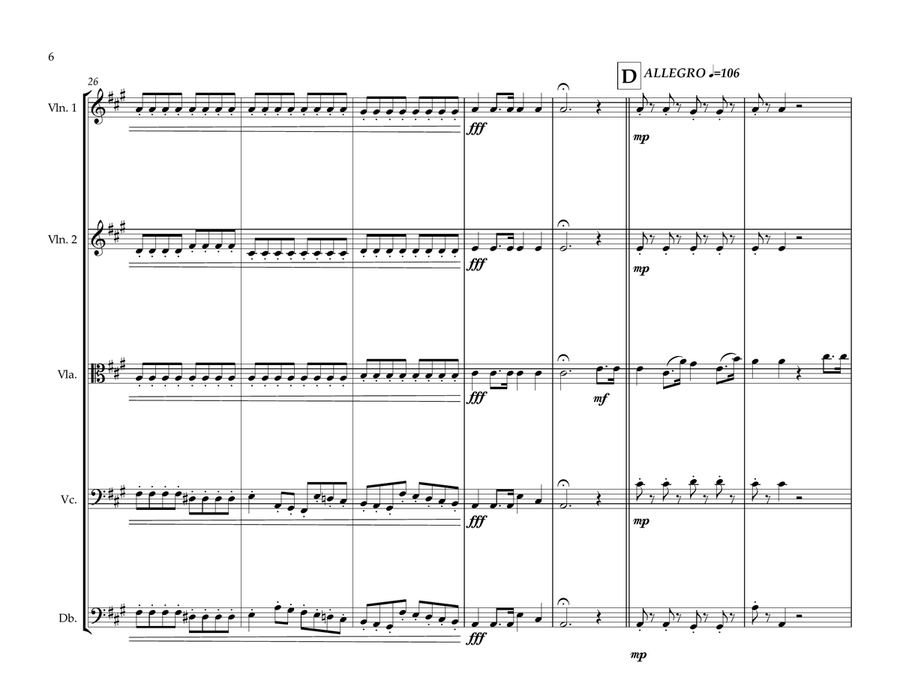Orchestra, String Orchestra - Level 3 - Digital Download
SKU: A0.1523473
By Keith Terrett. By Francisco José Debali. Arranged by Keith Terrett. This edition: audio, pdf. Classical, Contest, Festival, Instructional, Latin, Romantic Period. 27 pages. Keith Terrett #1097230. Published by Keith Terrett (A0.1523473).
The "Himno Nacional de Uruguay" (English: "National Anthem of Uruguay"), also known by its incipit "Orientales, la Patria o la Tumba" (English: "Easterners,[a] the Country or the Tomb"), is the longest national anthem in terms of duration with 105 bars of music. When performed in its entirety, the anthem lasts about four-and-a-half to six minutes, although nowadays only the first verse and chorus are sung on most occasions, such as before sporting events.
Its martial lyrics are by the Uruguayan poet Francisco Acuña de Figueroa, who also wrote the lyrics for Paraguay's national anthem, "Paraguayos, República o Muerte". The lyrics were officially declared the national anthem in July 1833. Several proposed musical settings failed to gain public support. The Rossini-inspired music that eventually became universally associated with the anthem was composed by the Hungarian-born composer Francisco José Debali, with the assistance of Fernando Quijano, a Uruguayan actor and musician. A few days after the first performance in July 1845, Debali's score was officially recognized as the music for the anthem.[8] As with other South American national anthems, the music was inspired by the local popularity of Italian opera. It includes several references to La Cenerentola and other operas by Rossini, as well as a direct musical quotation from Lucrezia Borgia by Gaetano Donizetti.
The French composer Camille Saint-Saëns is sometimes erroneously credited with having composed the music: although he was requested to write a hymn to celebrate the national independence day, his composition never became the national anthem.
The Uruguayan poet Francisco Acuña de Figueroa, who also wrote the lyrics for Paraguay's national anthem "Paraguayos, República o Muerte", was responsible for the martial lyrics. On 8 July 1833, Orientales, la Patria o la Tumba was officially recognized as Uruguay's national anthem.
Several proposed musical settings of Figueroa's lyrics failed to gain public support. One of the discarded settings was by the Spanish-born composer Antonio Sáenz. A proposed melody by the Italian composer Francesco Casale became the basis for the music of the Paraguay national anthem.
The Rossini-inspired music that eventually became universally associated with the anthem was composed by the Hungarian-born composer Francisco José Debali, with the assistance of Fernando Quijano, a Uruguayan actor and musician. The score was first performed on 19 July 1845, and it was officially recognized as the music for the anthem on 25 July 1848.
Francisco José Debali (born Debály Ferenc József, 1791 – 1859) was a Hungarian-born composer who emigrated to Uruguay in 1838 after previously working in the Kingdom of Sardinia and Turin.
As with every other South American national anthem, the music was inspired by the local popularity of Italian opera. The full 105-bar version of the anthem evokes an operatic scena e aria for soloist and chorus (almost in solita forma manner, with a cabaletta-like conclusion). Debali had conducted in many productions of operas by Gioachino Rossini and Gaetano Donizetti in Montevideo, and during the course of the anthem he makes several musical references to Rossini's La Cenerentola, as well as to Largo al factotum from The Barber of Seville, and to a chorus from Semiramide. A further passage is clearly borrowed from the ending of the Prologue of Donizetti's Lucrezia Borgia.
Of note, the music for the Uruguayan national anthem is sometimes erroneously attributed to Camille Saint-Saëns. It is true that during a visit to Uruguay in April 1916 Saint-Saëns was commissioned to write a hymn to celebrate the national independence day. However, circumstances prevented the work, Partido colorado, from becoming the national anthem.
This product was created by a member of ArrangeMe, Hal Leonard’s global self-publishing community of independent composers, arrangers, and songwriters. ArrangeMe allows for the publication of unique arrangements of both popular titles and original compositions from a wide variety of voices and backgrounds.
Digital Downloads are downloadable sheet music files that can be viewed directly on your computer, tablet or mobile device. Once you download your digital sheet music, you can view and print it at home, school, or anywhere you want to make music, and you don’t have to be connected to the internet. Just purchase, download and play!
PLEASE NOTE: Your Digital Download will have a watermark at the bottom of each page that will include your name, purchase date and number of copies purchased. You are only authorized to print the number of copies that you have purchased. You may not digitally distribute or print more copies than purchased for use (i.e., you may not print or digitally distribute individual copies to friends or students).

